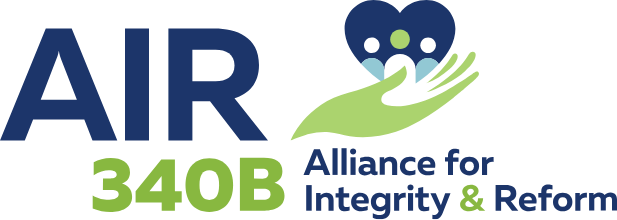About 340B
Congress created the 340B program in 1992 to help certain healthcare “safety-net providers” that serve many uninsured or vulnerable patients reduce outpatient prescription drug costs. The 340B program requires prescription drug manufacturers to provide discounts to specified federally-funded clinics and certain hospitals, otherwise known as “covered entities,” as a condition of participation in the Medicaid program. Certain 340B covered entities, like disproportionate share hospitals (DSH), are under no obligation to pass these discounts to patients or reinvest profits from 340B into free or reduced costs care for low-income patients.
Since its inception, the program has grown exponentially, yet patients have not always seen the benefits of that growth. In fact, 340B has more than quadrupled in size, from $9 billion in 2014 to $38 billion in 2020, and there is no evidence that this growth has been matched with patient benefit. Vulnerable and uninsured patients should be able to rely on hospitals and clinics participating in 340B to help provide affordable access to lifesaving medicines. But evidence shows this is often not the case. Instead:
- 65% of 340B DSH hospitals provide less charity care than the national average for all short-term acute care hospitals, including for-profit hospitals.
- 25% of 340B DSH hospitals provide charity care that represents less than 1% of their total operating costs.
- A small share of 340B DSH hospitals account for most of the total charity care from all 340B hospitals – with just 29% of 340B DSH hospitals accounting for 80% of the total charity care provided by all 340B DSH hospitals in FY 2019.
- A small share of 340B DSH hospitals account for most of the total charity care from all 340B hospitals – with just 29% of 340B DSH hospitals accounting for 80% of the total charity care provided by all 340B DSH hospitals in FY 2019.
Growth of 340B has continued in recent years despite declines in the number of uninsured patients. The major drivers of this growth are threefold:
- New entity enrollment, such as hospitals and grantees;
- 340B hospital acquisition of physician practices and the creation of new referral networks; and
- Contract pharmacy expansion.
A number of changes are needed to increase oversight and accountability in the 340B program, which will help ensure it is working in the best interest of patients:
- A clearer definition is needed for when hospitals can obtain 340B discounts by clarifying who meets the definition of a 340B patient.
- New policies are needed to address the dramatic growth of contract pharmacy arrangements between 340B entities and for-profit pharmacies.
- Changes are needed to curb the financial incentives driving 340B hospitals to acquire community-based physician practices, particularly given the substantial increase in healthcare costs associated with the site of care shifting from physician offices to hospital facilities in the last decade.
- Congress should revisit whether the current hospital eligibility criteria in the 340B law are appropriately targeting the program to true safety-net hospitals.
- HRSA should strengthen eligibility standards for non-public hospitals and work with the Centers for Medicare & Medicaid Services to develop new policies to prevent duplicate discounts.
- Hospitals that participate in the 340B program should be required to have a sliding fee scale for prescription drugs for low-income or uninsured patients.







